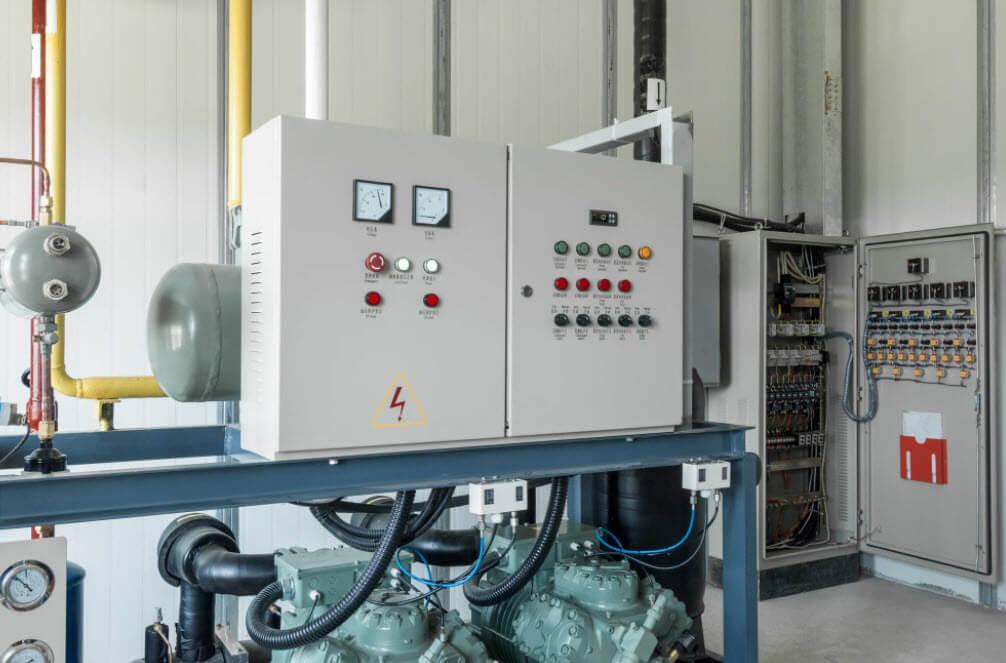PLC VFD integration has revolutionized modern industrial automation, offering seamless control over motor-driven systems with precision, flexibility, and energy efficiency. As industries increasingly adopt automated solutions to reduce operational costs and enhance productivity, the combination of Programmable Logic Controllers (PLCs) and Variable Frequency Drives (VFDs) stands out as a critical component of efficient process control.
Whether you're managing conveyor systems, pumps, HVAC systems, or any motor-driven equipment, the synergy between PLC and VFD technology ensures accurate speed control, soft starts, reduced wear and tear, and improved overall system performance. With automation at the forefront of manufacturing, understanding how PLC VFD systems work—and how to implement them effectively—is essential.
What Is a PLC VFD System?
A PLC VFD system involves the integration of a Programmable Logic Controller with a Variable Frequency Drive. The PLC serves as the brain of the system, executing logic-based control commands based on inputs such as temperature, pressure, or speed. The VFD acts as the muscle, controlling the frequency and voltage supplied to an electric motor to adjust its speed and torque.
Together, PLCs and VFDs create a dynamic, programmable, and highly adaptable motor control solution. This system allows for intelligent automation by:
-
Adjusting motor speeds in real-time based on operating conditions
-
Reducing energy consumption by optimizing performance
-
Providing smooth motor starts and stops
-
Minimizing mechanical stress on equipment
-
Enabling remote monitoring and diagnostics
Benefits of Integrating PLC with VFD
Integrating PLCs and VFDs offers several advantages that make this pairing ideal for smart industrial environments:
-
Energy Efficiency
VFDs help reduce energy usage by adjusting motor speed to match load requirements. When controlled by a PLC, these adjustments can be precisely timed and optimized. -
Improved Equipment Longevity
Soft starting and stopping features protect motors and mechanical components, reducing maintenance and increasing system lifespan. -
Enhanced Process Control
PLCs allow for programmable control logic that can be tailored to specific processes, increasing accuracy and consistency. -
Remote Access and Automation
Advanced systems allow for integration with HMIs and SCADA systems, enabling operators to monitor and control processes from anywhere. -
Scalability
PLC VFD systems can be easily expanded to include additional drives, motors, and sensors, supporting future growth and system upgrades.
Applications of PLC VFD Systems
PLC VFD combinations are used across a wide range of industries and applications due to their flexibility and performance benefits:
-
Manufacturing: Conveyor belts, assembly lines, and material handling systems
-
HVAC Systems: Fans, blowers, and compressors for efficient climate control
-
Water Treatment: Pump control for wastewater and clean water applications
-
Oil and Gas: Precision drilling, pumping, and refining operations
-
Food and Beverage: Packaging, bottling, and mixing systems requiring speed variation
Any application involving electric motors can benefit from the precision and control offered by a well-integrated PLC VFD system.
Get Expert Integration with X-Automation LLC
Designing and implementing a PLC VFD system requires in-depth knowledge of control logic, motor behavior, and industrial communication protocols. That’s where X-Automation LLC comes in.
X-Automation LLC specializes in custom automation solutions, including expert-level PLC and VFD integration. Whether you’re starting a new project or retrofitting an existing system, their team of automation professionals ensures seamless configuration, wiring, programming, and testing. With years of experience in industrial automation, X-Automation provides end-to-end services that align with your performance goals and budget.
From Allen-Bradley and Siemens to Schneider Electric and ABB, they work with all major PLC and VFD brands to deliver systems that are efficient, scalable, and easy to maintain.
Visit xautomationllc.com to learn more about their custom automation services and how their tailored solutions can elevate your industrial operations.
Key Features of a Well-Designed PLC VFD System
When designing or choosing a PLC VFD system, consider these key features for optimal performance:
-
Sensor Integration: Pressure, temperature, and flow sensors feed real-time data to the PLC for precise control.
-
PID Control: PLCs with PID (Proportional-Integral-Derivative) logic help maintain setpoints for flow, speed, or temperature.
-
Overload Protection: VFDs provide current limiting and thermal protection to prevent damage to motors.
-
Networking Capability: Ethernet/IP, Modbus, and Profibus protocols allow PLCs and VFDs to communicate with higher-level systems.
-
Custom HMI Interfaces: Intuitive dashboards enable operators to adjust setpoints, monitor status, and troubleshoot issues easily.
The Future of PLC VFD Systems
As Industry 4.0 continues to influence industrial automation, PLC VFD systems are becoming smarter and more connected. Integration with cloud platforms, AI-driven analytics, and edge computing are transforming how these systems are monitored and controlled. Predictive maintenance algorithms can now detect anomalies before failures occur, maximizing uptime and minimizing disruptions.
Incorporating smart PLC VFD solutions into your operations is a step toward a more efficient, resilient, and data-driven manufacturing environment.
Final Thoughts
PLC VFD systems are a vital part of the modern automation landscape. By combining the intelligence of PLCs with the motor control capabilities of VFDs, businesses can unlock superior performance, energy savings, and operational control.
If you're ready to upgrade your automation systems, turn to the experts at xautomationllc.com. Their tailored solutions and hands-on expertise will help you harness the full potential of PLC VFD integration for your facility.
